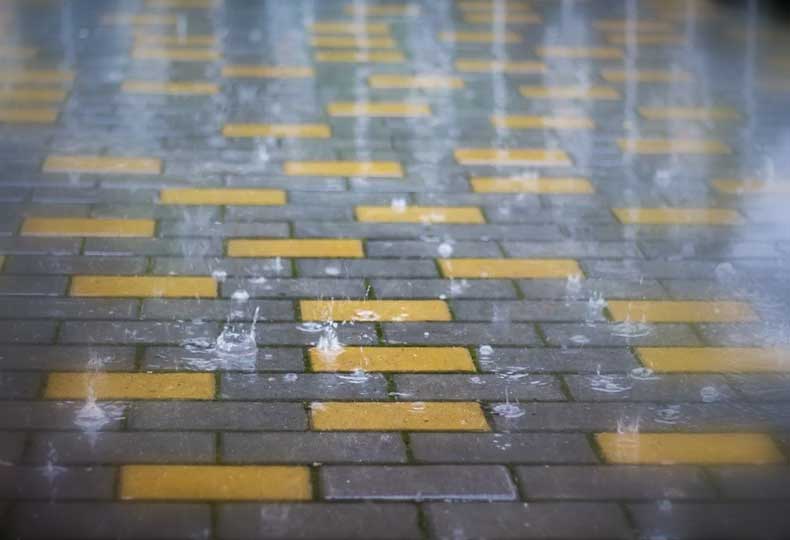The Keystone of Modern Spaces and Outdoor Walkways
Ceramic tiles have become the cornerstone of construction and renovation projects, bridging the gap between functional necessity and aesthetic excellence. Enveloping a wide range of residential and commercial spaces, these tiles have managed to command an unparalleled presence in places such as bathrooms, kitchens, and laundry rooms. Their undeniable allure is also vividly evident in exterior walkways, serving as a reflection of refined tastes and architectural prowess. This is predominantly attributed to their exceptional quality, which makes them an ideal choice for spaces prone to moisture and spills. Moreover, their unmatched beauty, stemming from their varied designs, patterns, and finishes, makes them a favorite amongst homeowners and designers alike. The versatility of ceramic tiles is another feather in their cap, granting them the ability to adapt to different styles, whether contemporary or traditional, indoor or outdoor.
Laying Tiles in The Rain

It’s no secret that laying tiles requires precision, and the environment plays a crucial role in the outcome. Wet conditions, especially rain, can profoundly impact the process. So, the critical question arises: Is it advisable to lay tiles when the sky is pouring?
Rainwater can interfere with the setting of the adhesive used to bond tiles to the surface. Specifically, when it comes to ceramic and porcelain tiles, the bond between the tile and the substrate is critical. Rain can dilute the adhesive’s consistency, reducing its bonding strength. This weakened bond can lead to tiles lifting off the surface, creating unevenness or even causing them to crack under pressure over time.
Another aspect to consider is the grout. Grout, the material filled between tiles to ensure a seamless finish, can be negatively impacted by rain. When exposed to rain, the grout can become washed out or weakened, which compromises its ability to hold the tiles in place. The presence of excessive moisture might also lead to the growth of mold and mildew between the tiles, which can be a health concern and affects the tiles’ aesthetic appeal.
Porcelain tiles, although known for their strength and water resistance, are not immune to the ill effects of rain during the laying process. When these tiles are subjected to rain during installation, it’s not just the adhesive that’s compromised but also the tile’s inherent properties. The results might not be immediate but, over time, can lead to complications that can be costly and time-consuming to repair.
To sum it up, while ceramic and porcelain tiles are known for their resilience, the process of laying them during wet conditions can compromise their integrity and longevity. It’s always advisable to check the weather forecast and plan the tile-laying activity accordingly.
In conclusion, although ceramic and porcelain tiles are known for their durability, the process of laying them in rainy conditions can compromise their integrity and durability. Therefore, it is always advisable to check the weather forecast and plan tiling works accordingly.
The World of Tile Laying
Tile laying is an art and a science. It’s not just about placing pieces next to each other; it’s about understanding the nuances of the material, the substrate, and the environment. Let’s delve into some pivotal aspects of tile laying.
Materials: Aside from the tiles themselves, one must consider adhesives, grouts, sealants, and spacers. Each plays a vital role in ensuring a flawless finish. Using the right adhesive for the specific tile type and surface is paramount.
Types of Tiles: Apart from ceramic and porcelain, the market offers a plethora of options like granite, marble, limestone, and slate. Each comes with its own set of properties and is suitable for different applications.
Shapes: Tiles are no longer restricted to squares or rectangles. Hexagonal, diamond, chevron, and arabesque are some of the trendy shapes that designers are gravitating towards.
Rules: It’s not just about placing tiles. Understanding the room’s layout, starting from the center, ensuring uniform spacing, and letting the adhesive set properly are among the golden rules of tile laying.
Maintenance: Depending on the type and location, tiles require specific care. Sealants might be needed for certain tiles, while others might demand regular cleaning with specific agents.
As we reflect on the intricacies of tile laying, it’s evident that every step, from selection to installation, demands attention. Whether it’s the beauty of ceramic tiles gracing interior spaces or the strength of porcelain adorning walkways, the underpinning factor remains the same – precision. And in achieving this perfection, understanding the dynamics of the environment, especially rain, becomes indispensable.


